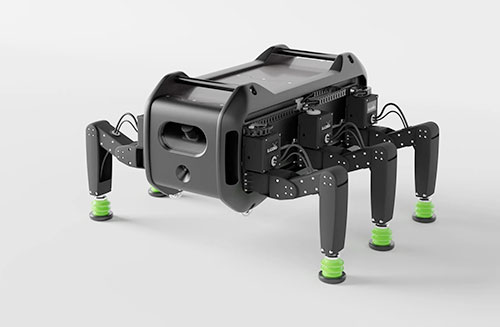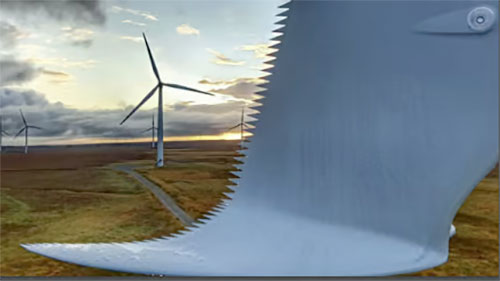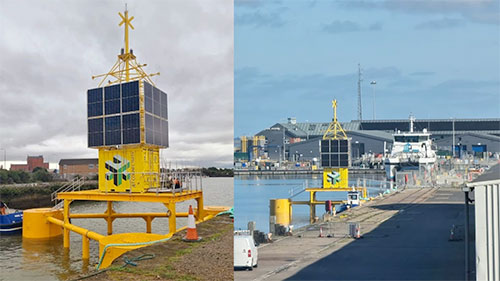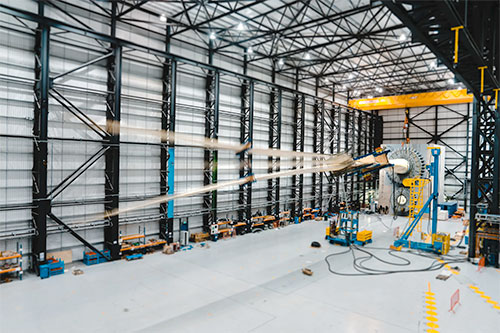The Technological Advancements in Offshore Wind
From F1 to blade robotics: Five innovations in UK offshore wind
The UK has positioned itself as a leader in the offshore wind sector, but what ground-breaking technology is driving its growth?
With world-leading offshore wind clusters and catapults, and a $1tn tech economy, the UK boasts high calibre innovation and expertise in the offshore wind supply chain. Particular strengths include:
- farm development,
- cutting-edge service technologies,
- a highly-skilled workforce,
- project planning and consultancy, through to maintenance and repurposing.
This has allowed the UK to push boundaries in offshore wind innovations, which in turn is making the industry safer, more productive and better connected.
Robotics

BladeBUG is a deep tech company providing advanced robotics and integrated inspection, maintenance and repair solutions across the renewable energy sector. It improves wind turbine performance and revenue generation through proactive and predictive maintenance, reducing asset downtime, unplanned events and catastrophic failures, which can all have a significant impact on the cost of energy.
Designed to be cost-effective, safer and faster than conventional methods of inspection, the compact, agile and multifunctional robots are being developed to work offshore to de-risk operations and make good use of narrowing weather windows. One of BladeBUG’s unique features is a modular payload bay that enables the integration of industry standard and customised tools to bolster capability, whether collecting high quality data sets or performing highly repeatable processes with greater accuracy.
How F1-inspired advanced engineering is increasing AEP
 With engineering expertise honed in Formula One motor-racing, Anakata is a leader in aerodynamic innovation; providing pioneering approaches to improving wind turbine performance. Uniquely designed blade furniture, which can also be retrofitted onto operational turbines, helps improve energy capture by up to 5% per annum. Tailored to each turbine type, Anakata have had its parts installed on all key manufacturers’ turbines, including Siemens, Vestas, Gamesa and Nordex since 2016. The company works with wind farm owners, asset managers and turbine manufacturers to improve operational performance.
With engineering expertise honed in Formula One motor-racing, Anakata is a leader in aerodynamic innovation; providing pioneering approaches to improving wind turbine performance. Uniquely designed blade furniture, which can also be retrofitted onto operational turbines, helps improve energy capture by up to 5% per annum. Tailored to each turbine type, Anakata have had its parts installed on all key manufacturers’ turbines, including Siemens, Vestas, Gamesa and Nordex since 2016. The company works with wind farm owners, asset managers and turbine manufacturers to improve operational performance.
Anakata recently launched the SuperAero Tip Booster (SATIP) to meet the specific needs of offshore; featuring 3D multilayer leading-edge protection, a ridged leading edge to enhance performance and reduce unsteady loads, and an advanced blade lightning protection system to improve blade integrity.
The SATIP design is also focused on reducing the impact of turbine wakes. It mixes the edges of a blade’s wake better, meaning that the wake is compressed and collapses at a faster rate, helping to improve the wind regime for downstream turbines, further improving Annual Energy Production (AEP).
5G connectivity in hazardous offshore environments

A 5G ‘living lab’ test centre in Humberside allows technology providers to develop, test and demonstrate in real world conditions, with access to reliable, high-speed communications.
For example, JET Connectivity’s solar-powered 5G buoy works in conjunction with fifteen 5G radio transmitters across five sites, including four wind turbines and a radio mast in the port, to provide an extended private 5G network over a 45km2 area. It is a crucial part of the new ‘5G PORTAL’ that will accelerate development of a new generation of digital technologies essential to the vast global expansion of offshore wind farms.
The lab is open to users from across the global offshore wind sector and provides a real-world test and demonstration zone for robotics, AI, remote sensors, wearable technology, zero emission vessels and smart ports – driving forward the digital evolution of the next generation of wind farms.
UK catapults – global hubs of innovation

The Offshore Renewable Energy (ORE) catapult has become one of the world’s leading innovation centres for offshore renewable energy and uses its unique testing capabilities linked to technology development and late stage R&D, analysis, supply chain acceleration, and applied research, to de-risk and supercharge innovation in the offshore renewable energy sector.
In line with the growing global opportunity for floating offshore, with potential for over 10GW of installed capacity by 2030, the new Floating Wind Innovation Centre in Aberdeen, opening in March 2024, will accelerate the build-out of floating farms and drive innovations in manufacturing, installation and O&M. The centre is the first in the world dedicated purely to the development of technology solutions linked to floating wind.
How to develop your energy innovation in the UK
The UK’s innovation ecosystem doesn’t exist in a bubble, with international businesses playing a massive role. Kavaken is a Turkish cleantech company that has recently set up its headquarters in Newcastle. It accessed support via the UK’s Global Entrepreneur Programme and Tech Rocketship Awards and is now developing its business further with the help of the ORE catapult. Kavaken’s software helps to identify potential faults and malfunctions to improve productivity in renewables. The company has benefitted from the UK’s cluster system, allowing it to access new contacts, funding opportunities and customers.

In 2024, the Tech Rocketship Awards have been rebranded as the Unicorn Kingdom Pathfinder Awards and are looking for scaleups and innovators in the energy space. Companies are invited to apply before 31 April 2024.
Source: Recharge







Leave a Reply
Want to join the discussion?Feel free to contribute!